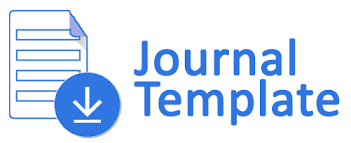Pengaruh Metode Discovery Learning dan Drill serta Motivasi Belajar terhadap Hasil Belajar Bolavoli siswa Kelas VIII SMPN 1 Kediri
DOI:
https://doi.org/10.29407/pn.v3i2.11870Keywords:
Metode Discovery Learning, Metode Drill, Motivasi, Hasil BelajarAbstract
Starting from the dissatisfaction of the relatively low bolavoli value, then developed the method of learning Discovery Learning and drill and motivation to learn. The purpose of this research is to know: is there any influence between discovery learning method with drill method to learning result of bolavoli; is there any influence of learning motivation on learning outcomes of bolavoli; and is there any interaction between Discovery Learning method and Drill method with learning motivation toward learning outcome of bolavoli at grade VIII student of SMPN 1 Kediri. The method of this research is experimental method. Sample 134 students (4 classes) from a population of 342 students (10 classes). This data collection technique with a questionnaire of learning motivation and test results of learning bolavoli. Data analysis technique used is ANAVA. The results of data analysis for the first hypothesis found price F of 0.379 with a significance value of 0.539 and for the second hypothesis found price F of 5.712 with a significance value of 0.018 and for the third hypothesis found price F of 4.232 with a significance value of 0.042l. Based on the results of research and the results of data analysis, can be obtained conclusion: There is no influence between the method of Discovery learning with Drill method of learning outcomes Volleyball; There is an influence of learning motivation on learning outcomes of Bolavoli; There is an interaction between Discovery Learning method and Drill method with learning motivation to Volleyball learning result.
Downloads
References
http://www.tuanguru.com/2012/08/penerapan-metode-drill.html". Diunduh tanggal, 5 mei 2015 Pk. 17.15 WB).
Kemendikbud. 2014. Pendidikan Jasmani, Olahraga dan Kesehatan SMP/MTs Kelas VII. Jakarta: Kementerian Pendidikan dan Kebudayaan.
Mulyana, Dedy. 2002. Ilmu Komunikasi serta Pengantar. Bandung: PT. Remaja Rosdakarya.
Natawidjaja, Rochman dan Moloeng, L.J. 1979. Psikologi Pendidikan untuk SPG. Jakarta: Mutiara Sinar.
Nashar. 2004. Peranan Motivasi dan Kemampuan Awal dalam Kegiatan Pembelajaran. Jakarta: Delia Press.
Riduwan. 2009. Metode dan Teknik Menyusun Proposal Penelitian. Bandung: Alfabeta.
Roestiyah. 2012. Strategi Belajar Mengajar. Jakarta: Rineka Cipta.
Sardiman, A.M. 2005. Interaksi dan Motivasi Belajar Mengajar. Jakarta: Rajawali Press.
Siadari. 2001. Teori Metode Pembelajaran. (Diakses). Eprints.uny.ac.id/7544/1/p%20%2023.pdf.
Siregar, Syofian. 2014. Statistik Parametrik untuk Penelitian Kuantitatif. Jakarta: Bumin Aksara.
Sudjana, Nana. 1991. Dasar-Dasar Proses Belajar Mengajar. Bandung: Sinar Baru.
Sudjana, Nana. 1999. Penilaian Hasil Proses Belajar Mengajar. Bandung: PT. Remaja Rosdakarya
Sudjana, Nana. 2008. Penilaian Hasil Proses Belajar Mengajar. Bandung: PT. Remaja Rosdakarya.
Sugiyono. 2008. Metode PenelitianKuantitatif Kualitatif dan R & D. Bandung: Alfabeta.
Syah, Muhibbin. 2004. Psikologi Pendidikan dengan Pendekatan Baru. Bandung PT. Remaja Rosdakarya.
Downloads
Published
Issue
Section
License
Authors who publish with this journal agree to the following terms:
- Copyright on any article is retained by the author(s).
- The author grants the journal, right of first publication with the work simultaneously licensed under a Creative Commons Attribution License that allows others to share the work with an acknowledgment of the work’s authorship and initial publication in this journal.
- Authors are able to enter into separate, additional contractual arrangements for the non-exclusive distribution of the journal’s published version of the work (e.g., post it to an institutional repository or publish it in a book), with an acknowledgment of its initial publication in this journal.
- Authors are permitted and encouraged to post their work online (e.g., in institutional repositories or on their website) prior to and during the submission process, as it can lead to productive exchanges, as well as earlier and greater citation of published work.
- The article and any associated published material is distributed under the Creative Commons Attribution-ShareAlike 4.0 International License









